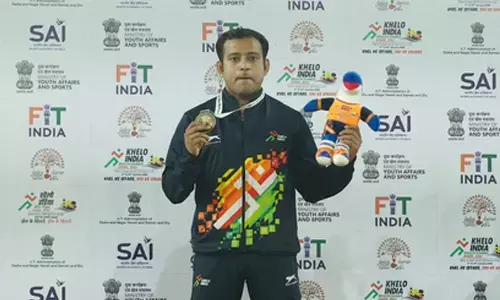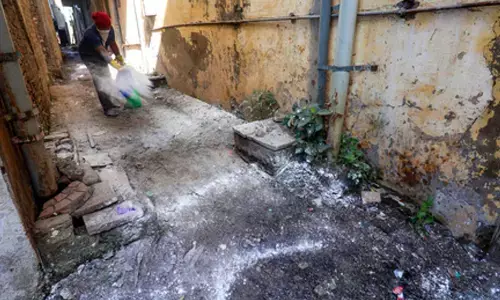African woman suffering from rare vascular disease undergoes complex heart surgery

African woman suffering from rare vascular disease undergoes complex heart surgery
Bengaluru: A 47-year-old Xaverine Mukabaranga from Rwanda, Africa, visited Manipal Hospitals complaining of chest pain in left side. She had a known case of Takayasu arteritis, a rare type of blood vessel disorder.
The condition is characterised by the host immune system damaging the aorta (the main artery carrying oxygenated blood from the heart to the rest of the body) by promoting inflammation. This leads to blocked arteries or weak artery walls that may bulge (aneurysm) and burst, causing complications such as stroke, heart attack, heart failure, high blood pressure, etc.
The condition primarily affects women of child-bearing age. The global prevalence of Takayasu arteritis is estimated to be about 2.6 cases per million every year and common among child-bearing women of Asian origin. Symptoms may include fatigue, night sweats, muscle, joint pain, high blood pressure, chest pain, forgetfulness, fainting, diarrhoea, etc.
In this case, the patient had undergone a previous surgery (reduction aortaplasty) 5 years back in Mumbai for ascending aortic aneurysm (the main artery supplying the upper part of the body). However, her follow-up CT scan in 2020 suggested dilated aorta at multiple sites, hinting her disease has progressed.
A CT artery aortogram at Manipal Hospitals Bangalore suggested multiple aneurysms affecting the blood supply to the neck, heart and also the lower part of the body. Surgery was recommended in this patient for preventing the aneurysms from rupturing.
"Aortic aneurysm is a life-threatening condition and dilation of arteries >6 cm is associated with a risk of 20-30% of rupture. Survival remains extremely poor in patients with a ruptured aneurysm (40% die due to brain aneurysm rupturing).
This was a high-risk case with multiple large aneurysms highly prone to rupturing. Poor blood supply due to defective circulation had also led to the complete shutdown of the right kidney functioning" explained Dr Devananda N S, HOD & Consultant - Cardiothoracic Vascular Surgery, Heart And Lung Transplant Surgery.
The surgical management of an aortic aneurysm involves replacing the weakened portion of the aorta with a graft surgically or non-surgically.
However, repairing an extreme aortic aneurysm is surgically complicated and requires an experienced surgical team. The patient underwent replacement of the Ascending, Arch and Descending Thoracic Aorta using an advanced procedure known as Frozen Elephant Trunk Technique.
Dr Devananda further elaborated, "Surgical management of this patient was very challenging due to the presence of multiple aortic aneurysms at various sites. Conventionally such a patient is operated on in a 2-stage approach.
We used a Frozen Elephant Trunk technique, a single-stage advanced procedure, available only at a few multi-speciality hospitals in India that makes use of a hybrid prosthesis. It combines an endovascular stent graft and a conventional surgical graft. It is a safer and effective surgical option for high-risk patients with extensive aortic disease."
The patient recovered well post-surgery and a post-surgery CT scan showed normal aorta anatomy and functioning. The patient was discharged after 10 days of the hospital stay.














